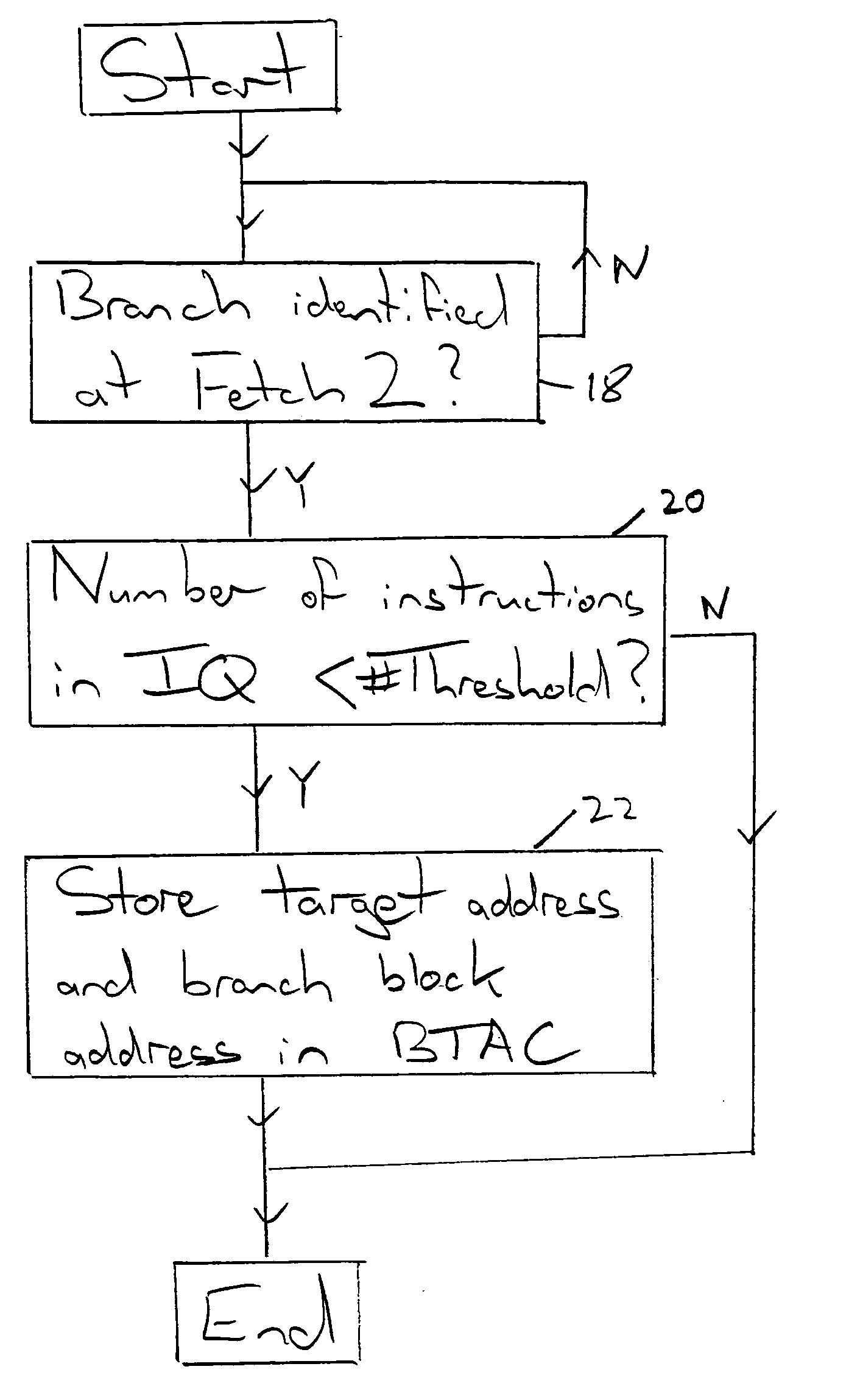Control of a branch target cache within a data processing system
a data processing system and target cache technology, applied in the field of data processing systems, can solve the problems of consuming electrical power, consuming a relatively large number of gates in their implementation, and taking a finite amount of time to identify a branch instruction, and achieve the effect of improving the accuracy of this estimation
- Summary
- Abstract
- Description
- Claims
- Application Information
AI Technical Summary
Benefits of technology
Problems solved by technology
Method used
Image
Examples
Embodiment Construction
[0035]FIG. 1 illustrates a sequence of program instructions A, B, C being executed in turn until a branch instruction is encountered. This branch instruction maybe an unconditional branch instruction or a conditional branch instruction. The branch instruction triggers a redirection of program flow to a different memory address. The sequence of program instructions then executed is a, b, c. If the system is employing instruction prefetching, then it is desirable to use branch prediction mechanisms to determine whether or not a conditional branch instruction will or will not be taken. Such branch prediction techniques can be usefully employed in conjunction with the allocation control techniques of the branch target caches as described below. Unconditional branch instructions will always be taken and accordingly do not require prediction, but may nevertheless benefit from provision of branch target address caches or branch target instruction caches.
[0036]FIG. 2 illustrates a portion o...
PUM
 Login to View More
Login to View More Abstract
Description
Claims
Application Information
 Login to View More
Login to View More - R&D
- Intellectual Property
- Life Sciences
- Materials
- Tech Scout
- Unparalleled Data Quality
- Higher Quality Content
- 60% Fewer Hallucinations
Browse by: Latest US Patents, China's latest patents, Technical Efficacy Thesaurus, Application Domain, Technology Topic, Popular Technical Reports.
© 2025 PatSnap. All rights reserved.Legal|Privacy policy|Modern Slavery Act Transparency Statement|Sitemap|About US| Contact US: help@patsnap.com



